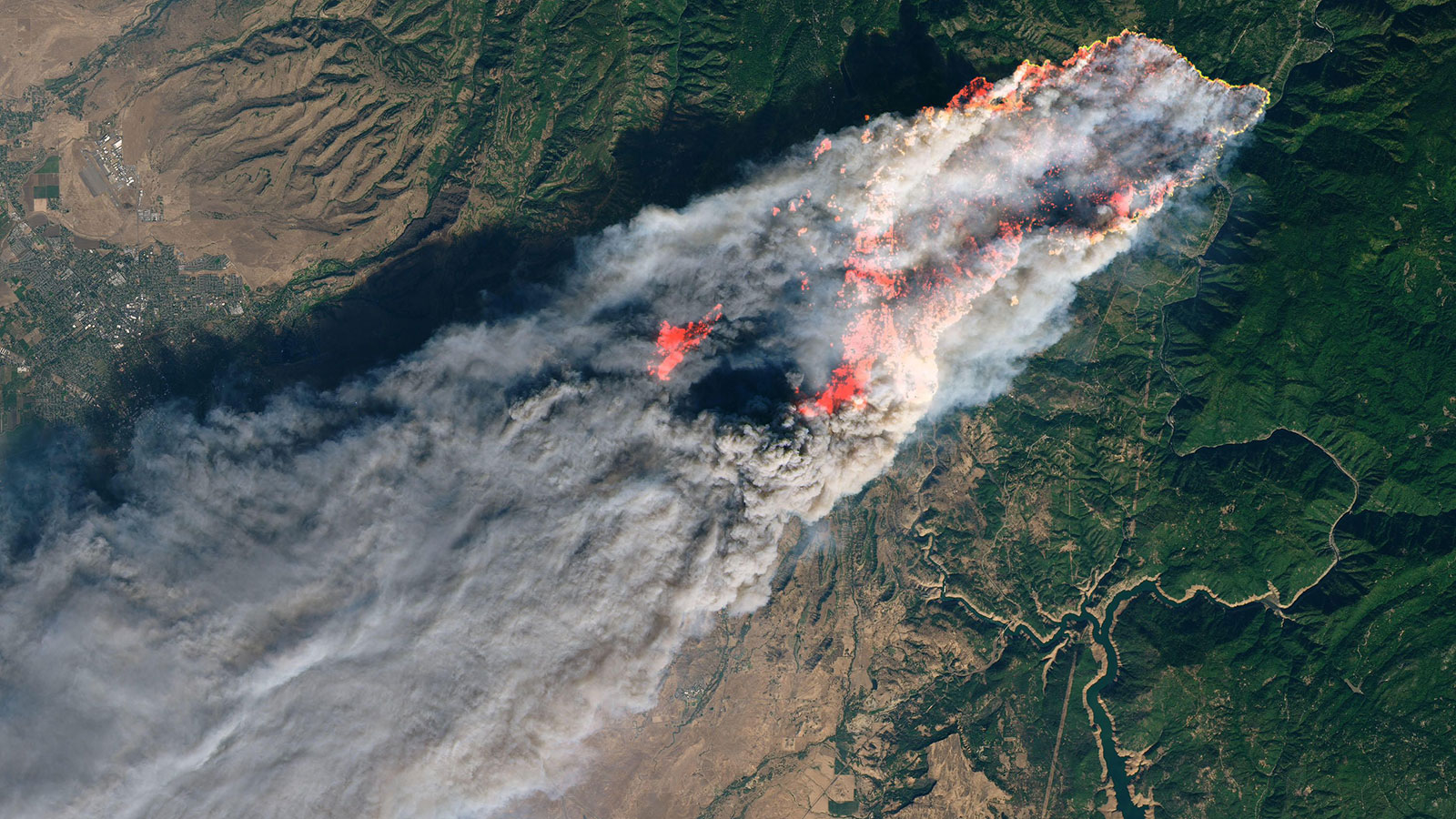NASA’s Armstrong Flight Research Center in Edwards, California, operates a Beechcraft B200 Super King Air aircraft. NASA tail number (TN) 801 serves as a testbed for various aeronautical research and airborne science projects. This B200 Super King Air also serves as a pilot proficiency aircraft as part of NASA’s support aircraft fleet (SAF).
Experiments Flown
In 2022, King Air TN 801 was the test aircraft for the following science campaigns:
- Signals of Opportunity Synthetic Aperture Radar (SoOpSAR). NASA Armstrong’s B200 aircraft was deployed to Truckee, California, and Grand Junction, Colorado, in support of the SoOpSAR campaign for the Jet Propulsion Laboratory (JPL). These were flights to assess the use of opportunistic P-band signals to obtain spatial enhanced bi-static reflectivity using synthetic aperture radar (SAR) techniques. If successful, this technique has many applications, including root zone soil moisture and snowpack studies.
- Sub-Mesoscale Ocean Dynamics Experiment (S-MODE). The B200 Super King Air deployed to Moffett Field in Mountain View, California, in support of NASA’s S-MODE field campaign. This multi-organizational study used in situ and remote sensing techniques to provide an unprecedented view of the dynamical transition in upper-ocean circulation between the mesoscale and submesoscale to better understand how it shapes Earth’s climate. NASA’s B200 Super King Air was outfitted with JPL’s DopplerScatt radar and University of California, Los Angeles’ Multiscale Observing System of the Ocean Surface (MOSES) camera system for this study.
- Boundary Layer Data System (BLDS). In November 2022, NASA Armstrong’s B200 Super King Air was used for a Center Initiative Fund project that studied air flow over one of the wings. The BLDS is a project created by professors and students at California Polytechnic State University, San Luis Obispo that performed boundary layer studies across an airfoil during pilot proficiency flights.
Aircraft Description
The Beechcraft B200 Super King Air is a widely-deployed general aviation aircraft, commonly used for business travel, express cargo delivery, and related purposes. The U.S. military also operates this type of aircraft as the C-12 Huron utility transport. Modeled after the earlier King Air 100, the King Air 200 was developed in the early 1970s with the first flight of the prototype in October 1972. The King Air 200 was awarded its airworthiness certificate under the Federal Aviation Regulation (FAR) Part 23 in December 1973.
The B200 Super King Air is an evolutionary aircraft that has better performance than the original King Air 200 due to upgraded engines. NASA acquired two B200 Super King Air aircraft in the early 1980s: NASA TN 7 in 1981 and NASA TN 801 in 1983.
NASA TN 801 plays a role in three of Armstrong’s flight divisions: aeronautics research, airborne science, and pilot proficiency. With its modified forward and aft nadir ports (used to install radars, camera systems, antennas, etc.), in-cabin equipment racks, and interchangeable zenith antenna ports, TN 801 can be modified to suit a wide range of scientific experiments and needs. Aside from flying in scientific research, TN 801 is one of Armstrong’s pilot proficiency aircraft, assisting pilots in maintaining the requirements to fly.
Aircraft Specifications
Wingspan: 57 feet, 11 inches
Wing aspect ratio: 9.8 to 1
Wing loading maximum: 41.3 pounds per square foot
Length: 43 feet, 9 inches
Height: 15 feet
Empty weight: 7,315 pounds
Maximum takeoff weight: 13,420 pounds
Engines: TN 801 is fitted with two United Aircraft of Canada PT6A-52 turboprop engines rated at 850 maximum shaft horsepower (shp) driving three-blade, constant-speed, and full-feathering reversible propellers. NASA TN 7 is fitted with similar PT6A-42 engines.
Crew: Two pilots, with full dual controls, and instruments payload, including a Garmin G1000 installation. Up to 11 passengers, depending on cabin configuration. Up to 400 pounds baggage in rear compartment. NASA TN 7 also has additional cargo storage in an underbelly container.
Service ceiling: 28,000 feet
Maximum speed at 15,000 feet altitude: 260 KCAS
Cruising speed at 25,000 feet altitude at average weight: 273 knots (313 mph)
Stalling speed, full flaps: 76 KIAS (87 mph)
Maximum range: 915 to 1,800 nautical miles (1,053 to 2,075 statute miles) at 27,000 feet altitude with full fuel, depending on payload


























